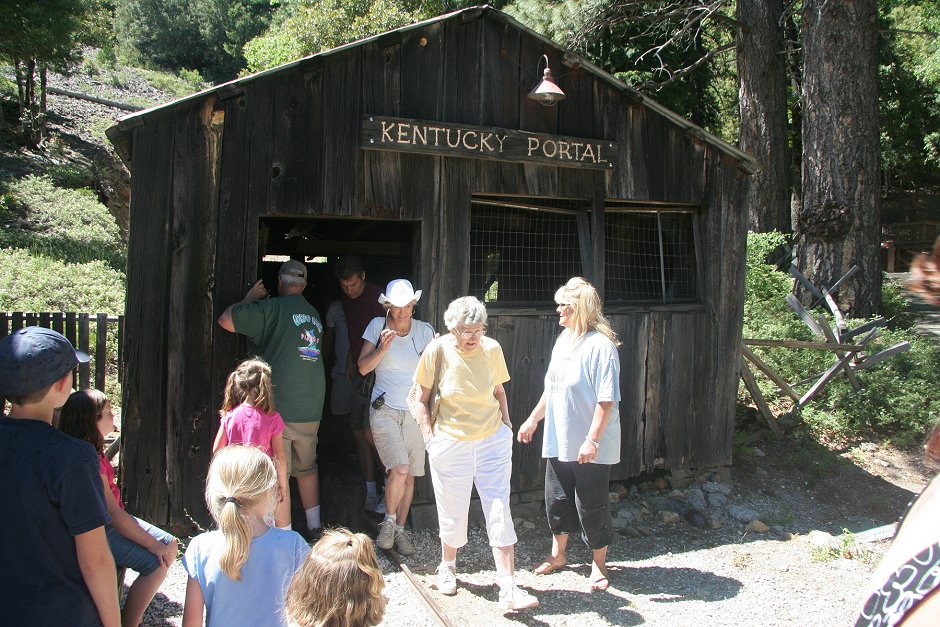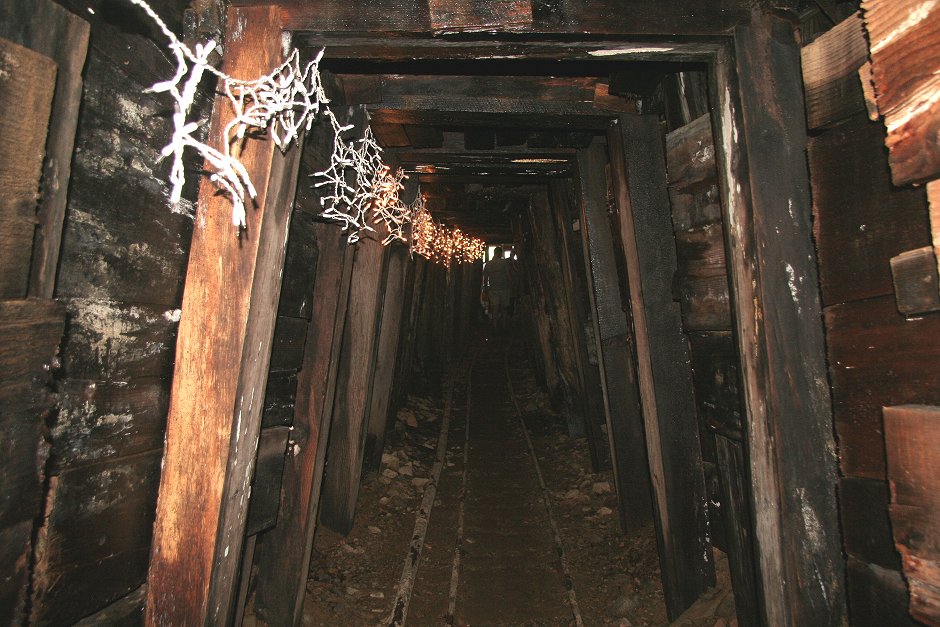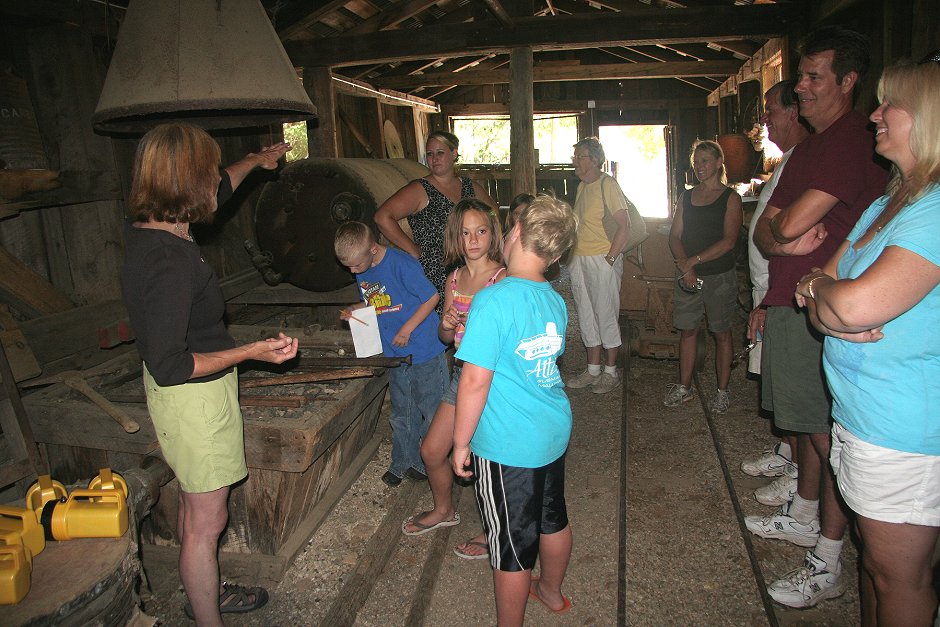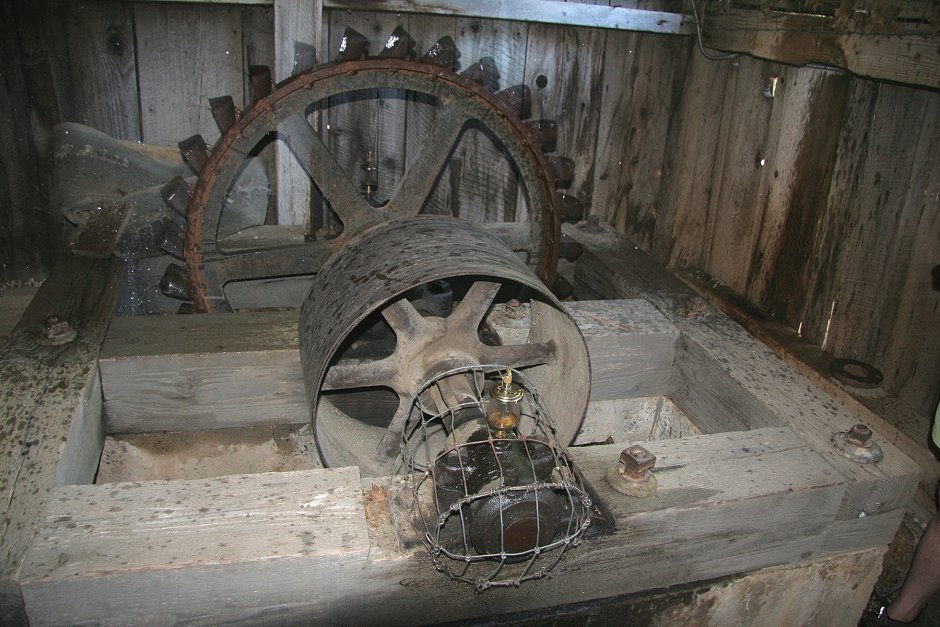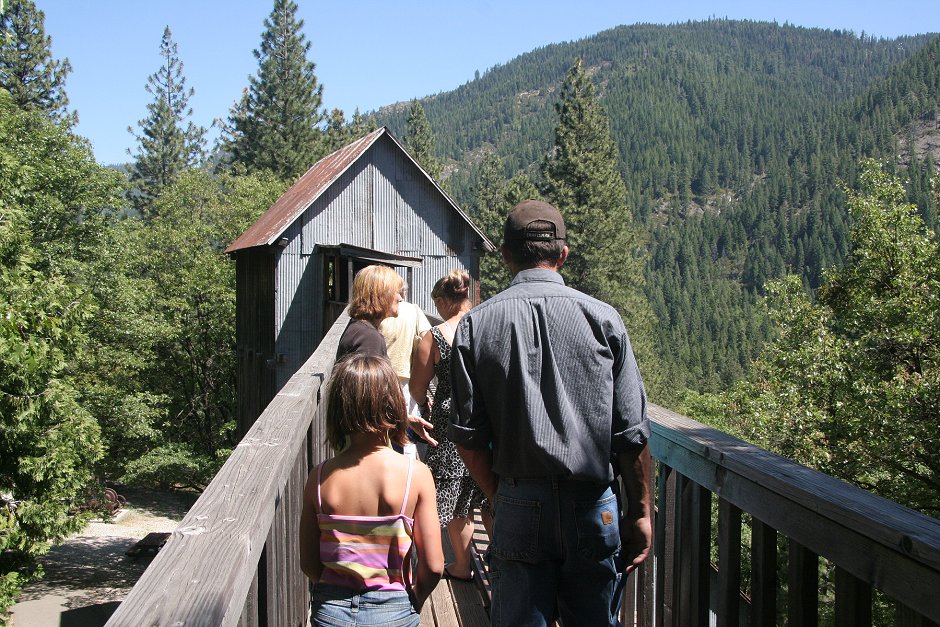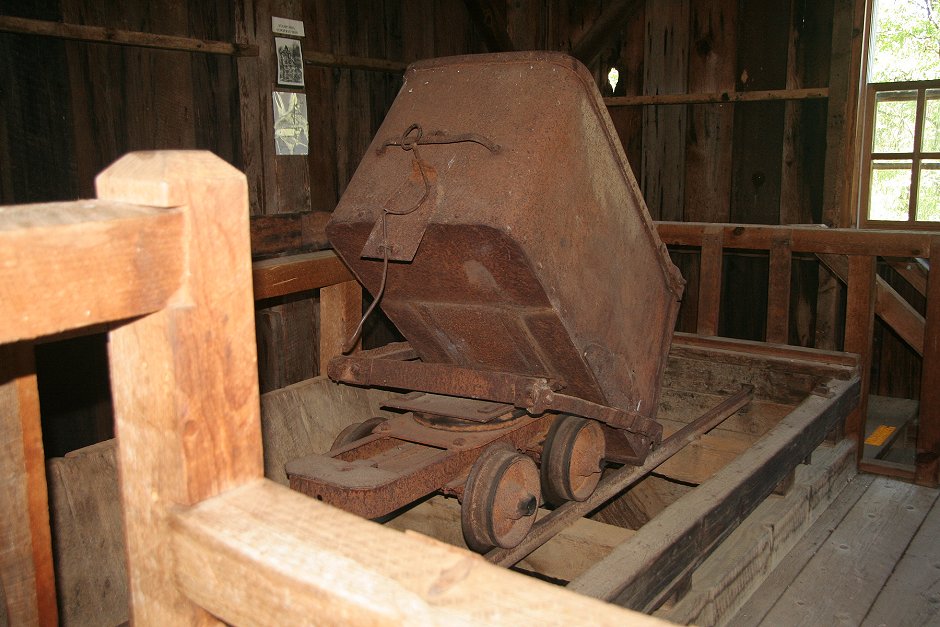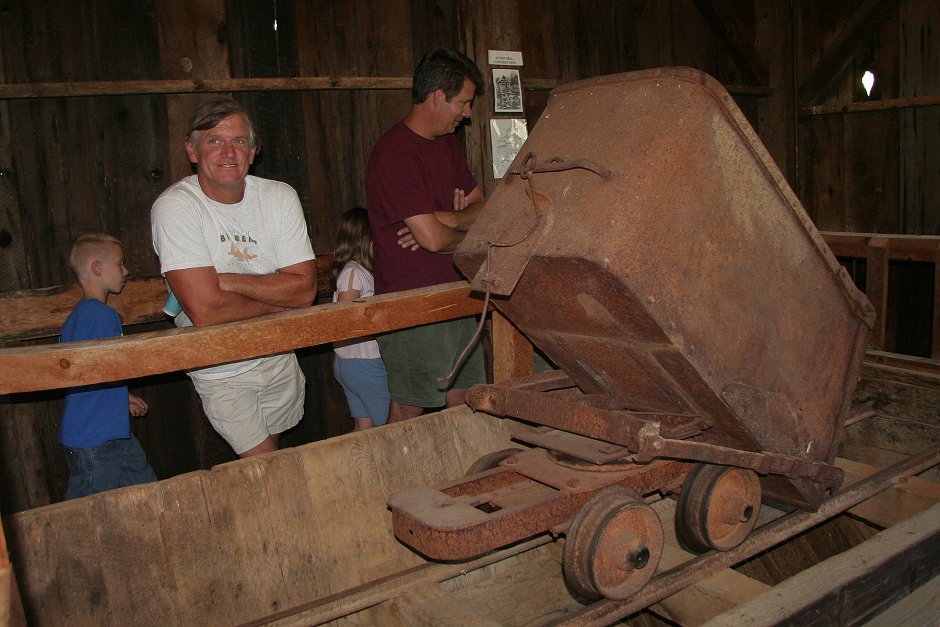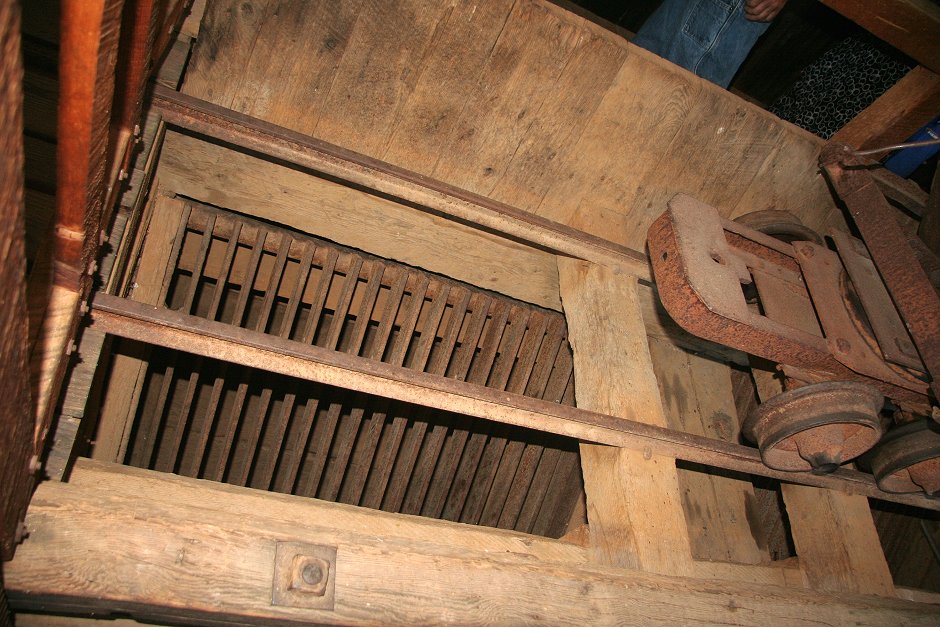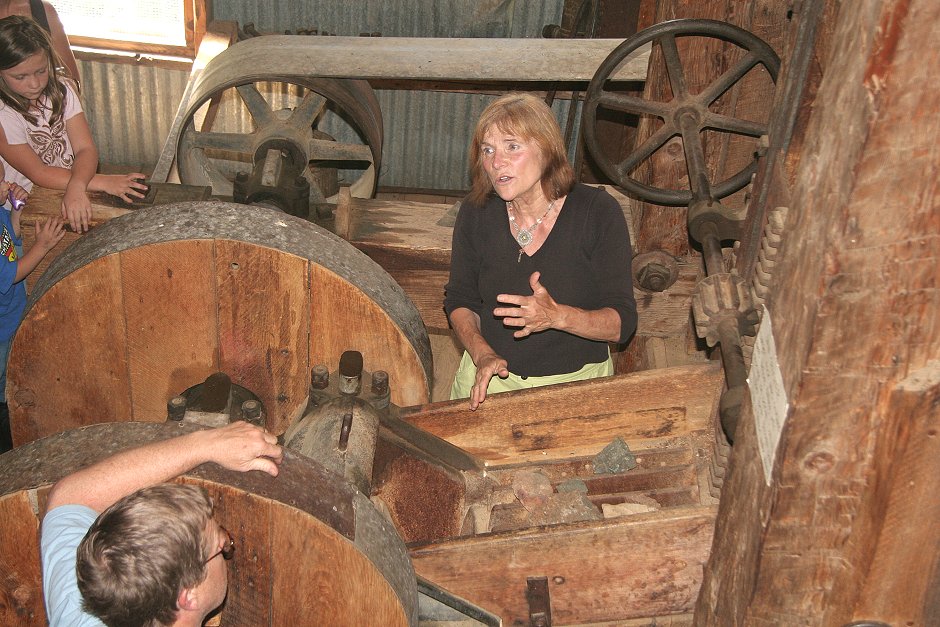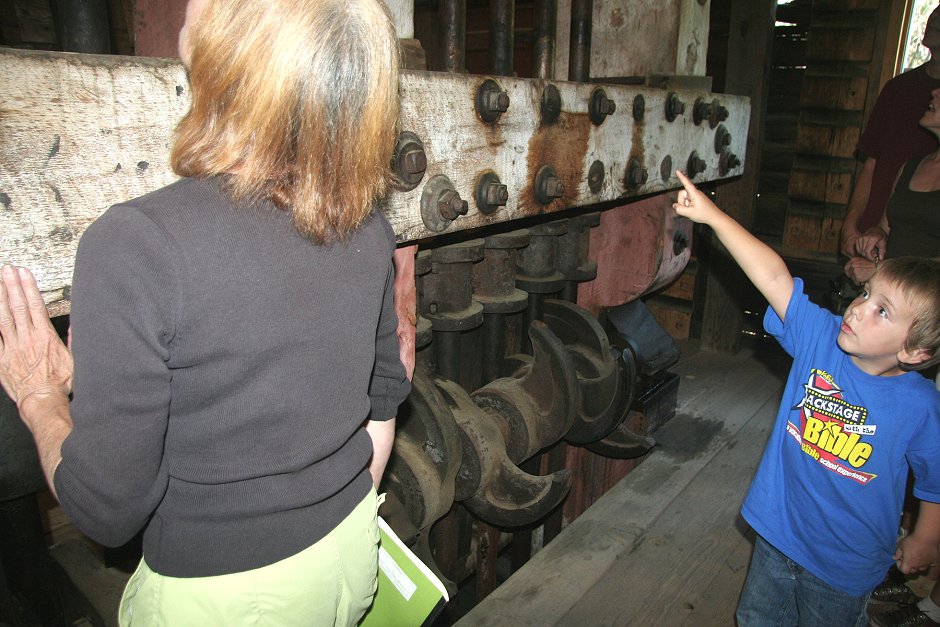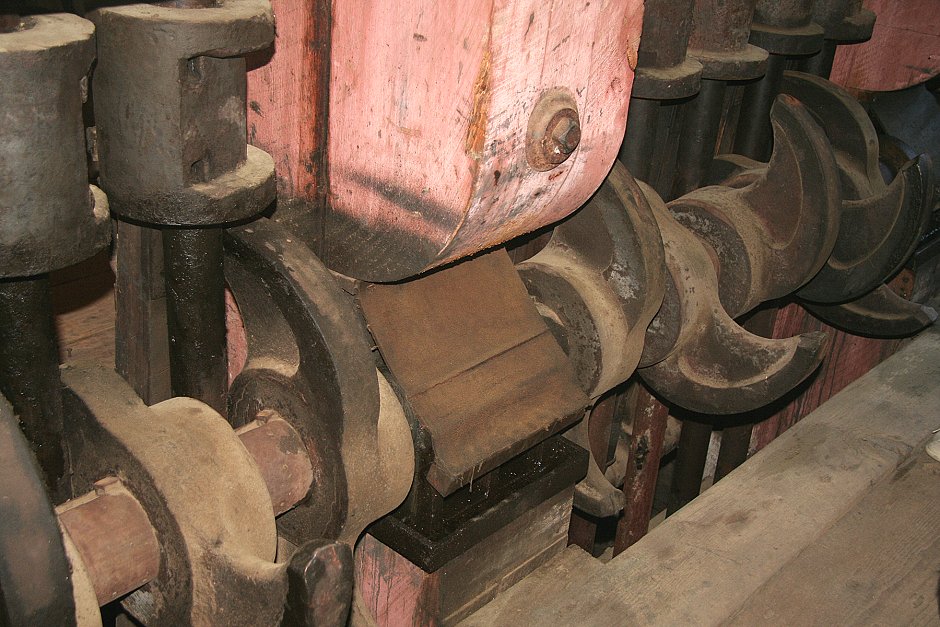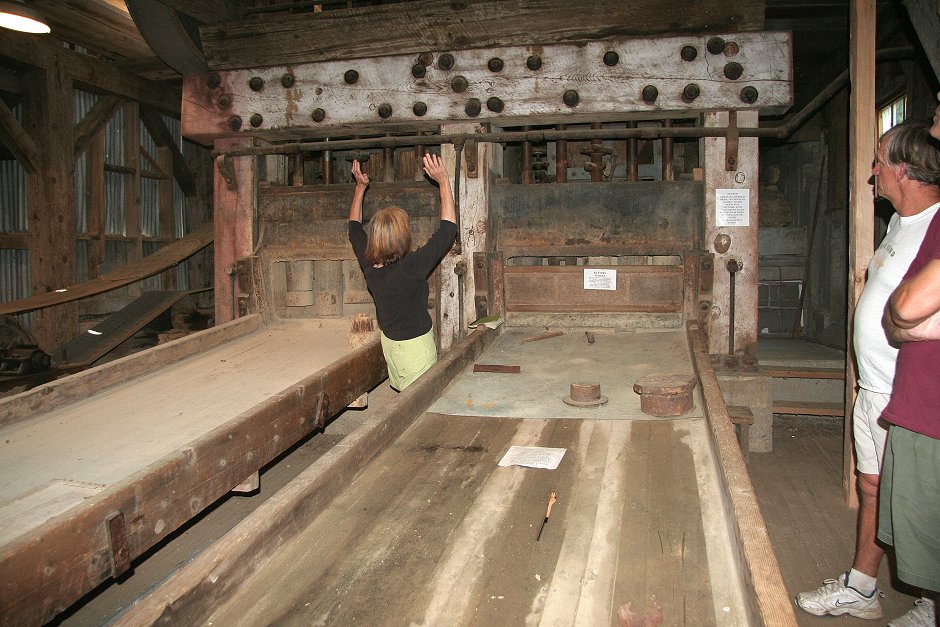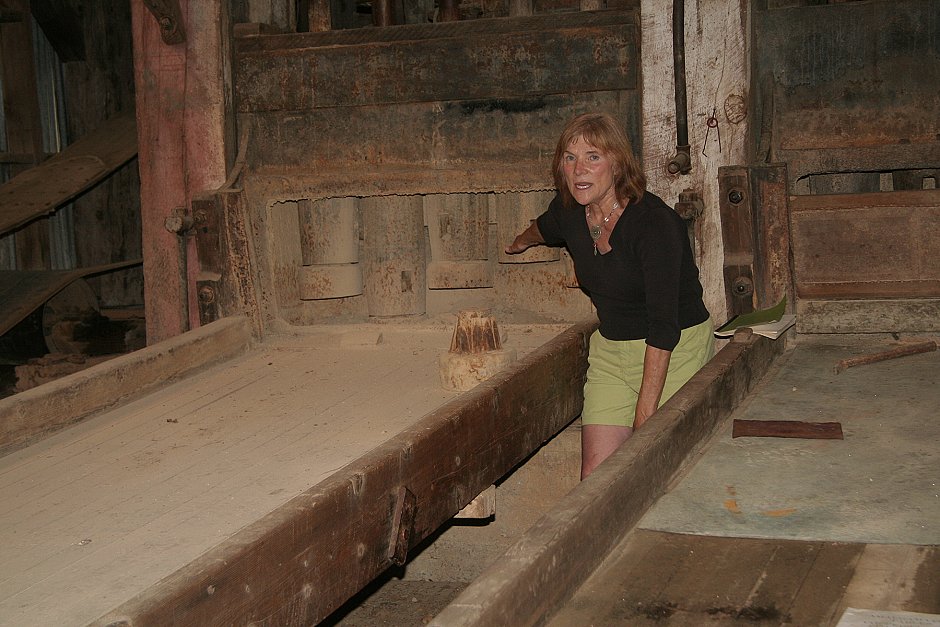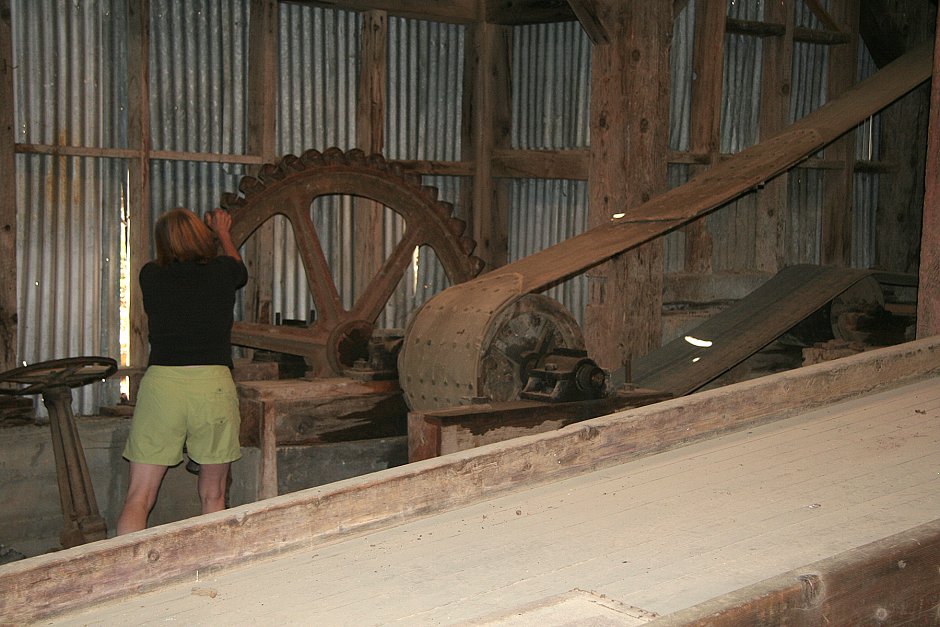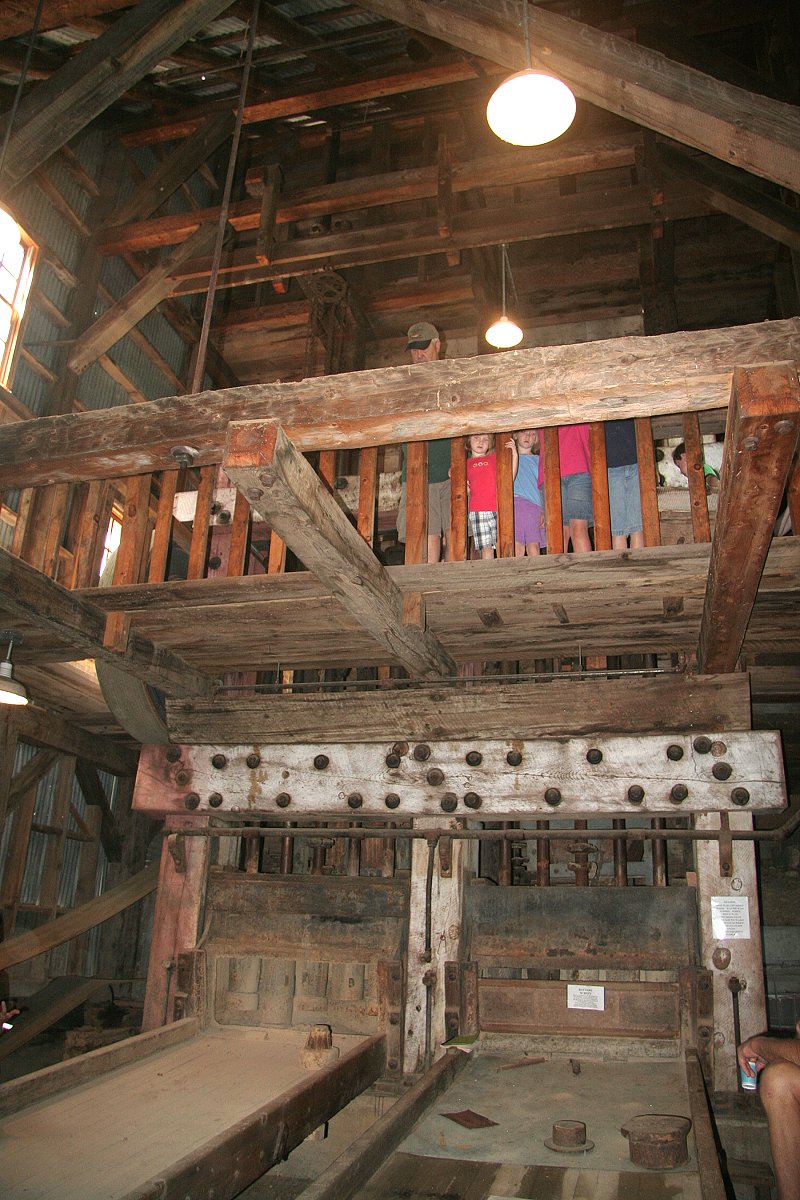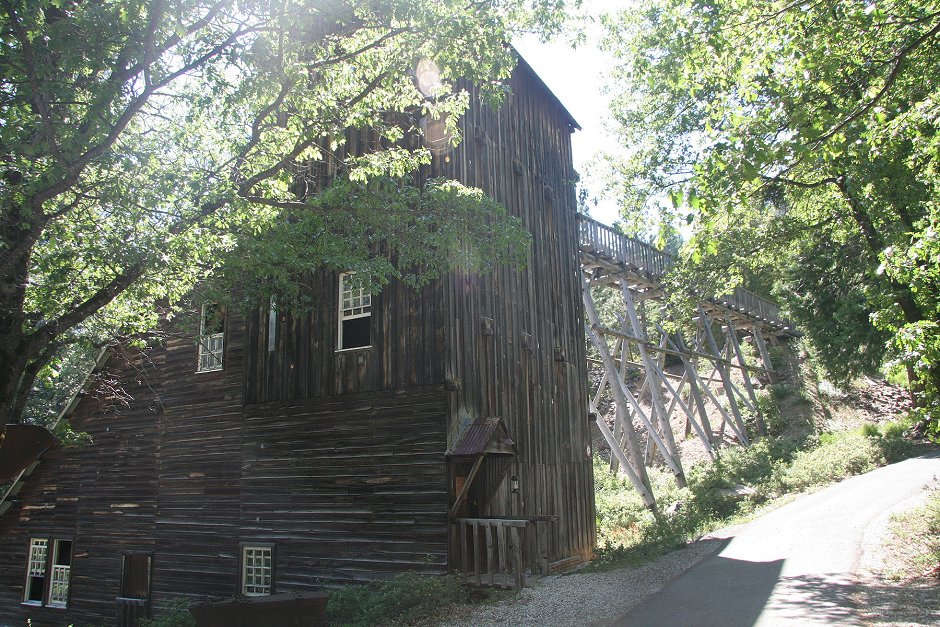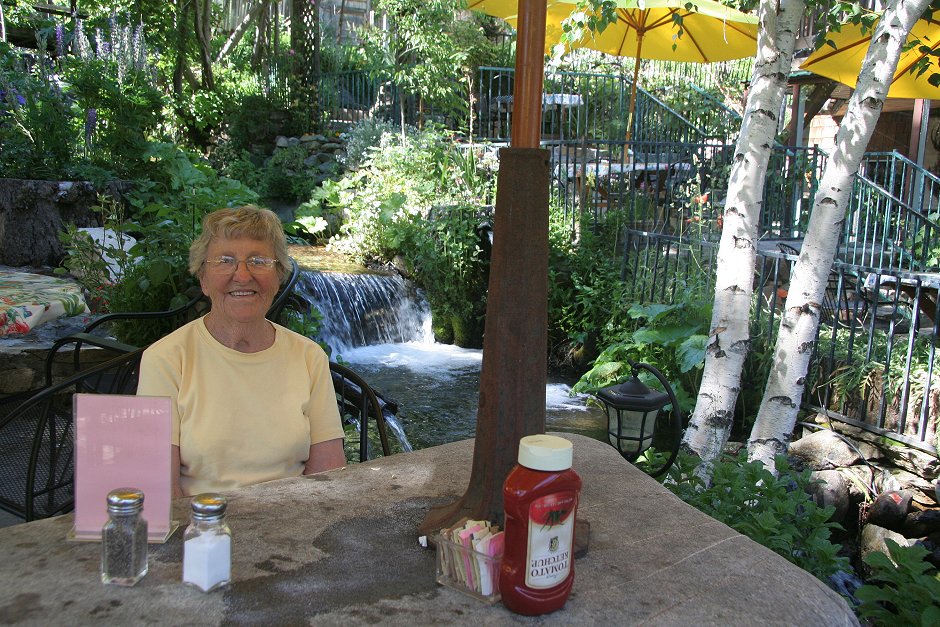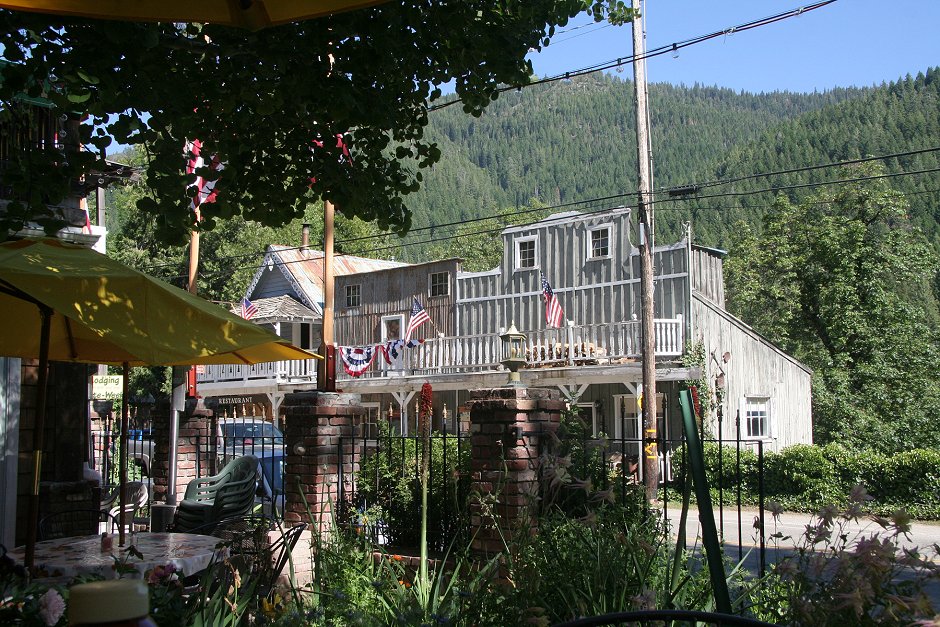|
After living in the Gold Country
for 17 years, we finally took an afternoon to see this wonderful little
mine just outside of Sierra City, California. It's less than 60
miles from Lake Wildwood on beautiful winding country roads all the
way. We went Pleasant Valley road to Route 49, turned left, and
then past Downieville to Sierra City. The mine is on the left, well
marked by a sign on the road just past the town. Allow an hour and
three quarters for a relaxing, beautiful ride to Sierra City at 4000
feet elevation.
The museum and mine tours are run
by volunteers of the Sierra County Historical Society, from Memorial
Day to Labor Day, every day but Mondays and Tuesdays, 10 a.m. to 4
p.m. Leave a one dollar donation and browse the museum or take
the complete tour of the mine, $7 for adults and $3 for children. It's
a great tour (about an hour and a half) which I highly recommend. Tours
start at 11 a.m. and 2 p.m.
(Note: we learned during a
second trip in 2011 that the museum closes shortly after 2 p.m. if
there are no visitors. So, even though you don't plan to take the tour
through the mine, make sure you get there before 2 p.m. and/or call to
make sure there will be a volunteer on duty at the museum while another
volunteer leads a tour.)
The mine was never a financial
success because of the low gold content in the rock, but it was
operated on and off by small groups of miners from 1850 to 1954.
The smallness of the operation makes the mine an ideal exhibit because
the tour follows the entire operation from ore car tracks in its adit
(an entrance via a horizontal tunnel into the side of a hill), to a
one-man blacksmith shop, a good-size operating Pelton wheel, ore cars
and tracks to the nearby 10-stamp mill, another Pelton wheel, and all
the details of rock crushing operations.
|
